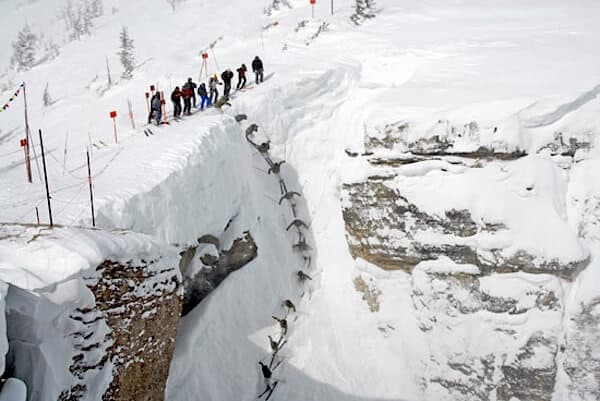
We’ve picked out what we consider to be some of the most notorious ski descents in the Alps and Rockies. They’re certainly not essential to ski and indeed they can easily be avoided. But any skier or snowboarder who wants to test themselves in the ultimate challenge should go ahead and ski the classics.
Corbet’s Couloir, Jackson Hole
https://www.youtube.com/watch?v=PxO4oOuQZ9g
Wow factor: Off the scale.
When to do it: December to mid-March.
Appeal: Pro-skiers do it these days as a warm-up. But for mere mortals, this is the big one.
Difficulty: Mental, rather than technical.
Danger: Plenty of blown knees and broken arms, but no deaths.
What’s involved: A jump into a breach in the limestone wall of Rendezvous Mountain, a few tight turns, and then the open powder of Tensleep Bowl. An essential part of Corbet’s siren-like allure is its petrifying initial appearance. Until you summon up the courage to inch closer and peer over the cornice, it appears bottomless.
History: Corbet’s Couloir is named after a mountain photographer, a veteran of Everest and of Mt McKinley in Alaska, who first recognised its potential as a crowd-puller when he and Paul McCollister, Jackson’s original owner, were surveying the resort in 1963.
“One day, people will ski that,” said Barry Corbet as the pair made their way across Tensleep Bowl.
“l didn’t believe him,” Paul told me many years later, “but now Corbet’s brings people here from all over the world.” Somebody’s even made a film about it.
How to ski it: jump – it’s the only way in. Distance spent in freefall depends on both the snow conditions and chosen entry route and is anything from eight feet to 30ft.
The ‘normal’ – no one ever called it ‘easy’ – route is to leap on the left. You catch the least air this way, but in the air you must make an instant turn to the right, followed by another quick left as soon as you’ve landed.
Can I bottle out? yes, easily, and no shame in that. You can stand on the edge, step back and ski down the black piste as you suddenly remember a forgotten lunch appointment.
Verdict: Corbet’s bark is actually worse than its bite, but try telling that to someone teetering on the edge of the void.
The Swiss Wall (real name La Chavanette), Avoriaz
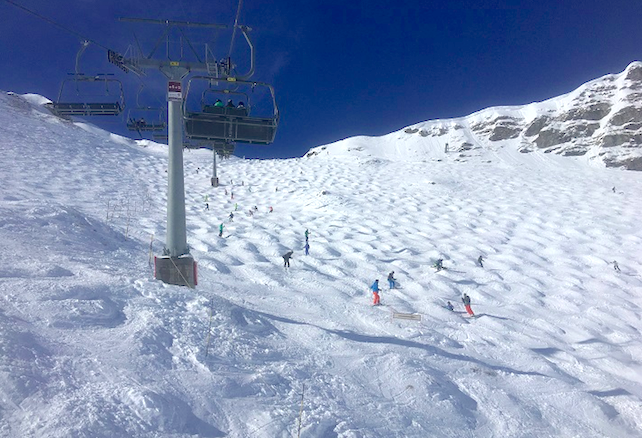
Wow factor: “Oh my God,” at the start.
When to do it: As soon as it is opened after a fresh snowfall.
Appeal: Reasonable cred, as in “took a tumble on the Swiss Wall in January when this guy skied into me.” You were ok? “Yeah, popped my shoulder, but they got it back in pretty quickly.”
Difficulty: Moderate, depending on snow conditions.
Danger: Its brutally exposed position means that snow can quickly turn to ice, transforming The Wall from friend to a foe that can – and has – killed. But the risk of seriously hurting yourself is only high in extremely icy conditions. The biggest danger is not from the slope itself but from other skiers losing control and tumbling into you.
What’s involved: The Swiss Wall, more correctly known as La Chavanette, has attracted more hype over the years than almost any other run in the Alps. In fact, most of the run is not desperately steep. Like a lot of such extreme slopes the degree of difficulty is almost entirely weather-dependent. In the right conditions, when the snow has settled after a fresh fall, almost anyone can do it. A friend once carried a heavy Samsonite suitcase down it to avoid a lengthy car journey while switching resorts and countries.
History: The Wall’s reputation was largely created by Frenchman Jean Vuarnet, better known to most for his sunglasses than his Olympic gold at Squaw Valley in 1960. After his success he was given the job of creating Avoriaz and the cross-border links of the Portes du Soleil. The Swiss Wall was his second winner.
How to ski it: The initial gradient is so severe that, from the top, you can’t see what’s below. What’s more, after a snowfall, the volume of skier traffic quickly transforms it into bumps as big as Volkwagens. These tend to be awkward and ill-cut at the top, adding to the difficulty. Turn slowly with care, but with commitment. Keep all your weight on the lower ski and your heart in your mouth. Once over the edge, the bumps tend to even out and hopefully you can find a rhythm.
Can I bottle out? Not unless you fancy a long, exhausting climb up.
Verdict: Great for anyone making the transition from ok skier, to competent skier.
The Hahnenkamm, Kitzbuhel
https://www.youtube.com/watch?v=Hq_wxQiJxz0
Wow factor: Unadulterated terror.
When to do it: The week after the ski race (which is held the last weekend in January).
Appeal: All the greats did it successfully. So why not you?
Difficulty: Technically, the tops.
Danger: Hospital, if you fall.
What’s involved: The Hahnenkamm is the most celebrated and dangerous race in the Skiing World Cup. During the 3.3km descent, through 863 vertical metres, racers reach speeds of up to 84mph as they negotiate slopes of 85 degrees. The whole process takes less than two minutes. But the idea for amateurs is to ski the course in the days immediately after the race, when it is being dismantled. You need special permission from the race marshal to do this – as well as race-prepared skis to grip the icy surface.
History: Back in 1931 Austrian Ferdl Friedensbacher completed the course in 4 minutes 34 seconds. In 2012, Didier Cuche won for his fifth time in 1 minute 13.28 seconds.
Two-times winner of the race, Canadian Steve Podborski, once told me: “For a man without a machine, it is ultimate high-speed test of physical and mental willpower.”
How to ski it: Don’t ask me. Within seconds of ducking under the netting below the starting gate with my guide I found myself in a less-than-controlled 25mph side-slip on a sheet of ice.
“You hardly need to push out of the start, it’s almost a freefall,” says veteran World Cup racer Martin Bell. “Inspecting the course for the first time, you think the first couple of turns are steep.
“But then you come to the Mausefalle, a gradient of virtually one-in-one where you fly about 20m. I never liked to watch the racer before me disappear over that cliff – it makes you wonder how anyone can do it.”
Much the most difficult part is still to come – the Steilhang with its cruel reverse camber. “The turn down into it is definitely the hardest turn in any downhill because it goes on for so long and because the slope runs away from you as you try to turn,” says Bell.
Can I bottle out? Anytime. However, even with full brakes on, the process is not easy because of lack of grip on the ice.
Verdict: See it, but don’t ski it. No camera can ever do justice to its gradient and difficulty.
Courchevel Couloirs, Courchevel
https://www.youtube.com/watch?v=iovqR_hFrfA
Wow factor: This is largely provided by the path at the top. “Surely it can’t get worse than this?” you wonder. It doesn’t.
When to do it: In good conditions, throughout the season.
Appeal: Flash. A useful conversation gambit over lunch at Chalet de Pierres on the way down to Courchevel.
Difficulty: Moderate, depending on what you call moderate.
Danger: Minimal, but you can hurt yourself anywhere.
What’s involved: The Telepherique, Emile Allais, and Grand Couloir are side-by-side chutes that were once reputed to be the steepest black runs marked on any piste map in the world. Although these day for legal reasons the resort likes to refer to them as off-piste itineraries.
Jaded experts dismiss them as being neither long, nor narrow, nor of a sufficiently sharp gradient to produce the necessary surge of adrenalin. But the Couloirs can certainly have their moments – moments when the skier on them suddenly wishes he or she was somewhere, anywhere else, but here.
History: Emile Allais, the legendary French downhill champion gave his name to one of them – just as Ernest Hemingway gave his name to a bar in every resort in the Alps.
How to ski them: The Couloirs are reached by a steep and tricky path from the top cable-car station. Indeed, some would say that the path is the most difficult part of the descent. The first ribbon of snow falling away to your right is the Telepherique, It descends – as its name implies – directly beneath the path of the cable-car and is marginally the steepest of the three. All are sheltered from the sun in mid-winter and hold their snow well. But the degree of difficulty increases dramatically in high season if there is a lengthy period between snowfalls. Then, the volume of skiers can polish the moguls near the top into blocks of ice. In such conditions the piste patrol will close the entry path.
Can I bottle out? Make up your mind before you leave the cable-car. Once you turn right and start to slide down the slippery slope, it is difficult to turn back.
Verdict: Great fun in the right conditions, but not a life-changing experience.
La Face, Val d’Isere
https://www.youtube.com/watch?v=Kud29UcBNzg
Wow factor: The lip half-way down is known as Lemmings Leap, followed by a panoramic view of the town.
When to do it: Especially good in the morning before too many people have been on it. The degree of difficulty depends on the snow and weather conditions – ice and bad light are the worst.
Appeal: Steep but pisted, but you can’t hide – everyone at the bottom will be able to watch you ski it.
Difficulty: You’ll need sharp edges and the confidence to go for it. The secret is to avoid the other skiers picking their way down – some of them will inevitably fall. So stick to the sides where less confident skiers are less likely to venture and the snow usually provides more grip.
Danger: Any fall is inadvisable (especially when icy) and liable to mean you’ll slide a very long way.
What’s involved: Access is from the top of the Olympique gondola, then cut left. In high season the ice can be terrible.
History: Having won the 1992 Winter Olympics, Albertville selected Val d’Isere to stage the men’s alpine skiing events. Renowned for its technical challenge, La Face was chosen for the Men’s downhill. The racers complained that the technical sections were too fast and therefore dangerous with speeds close to 90mph.
Can I bottle out? Yes, you can cut skier’s right onto a less demanding run called Joseray.
Verdict: It’s Val’s Holy Grail for every aspiring intermediate.
Tortin (real name: Chaussoure), Verbier
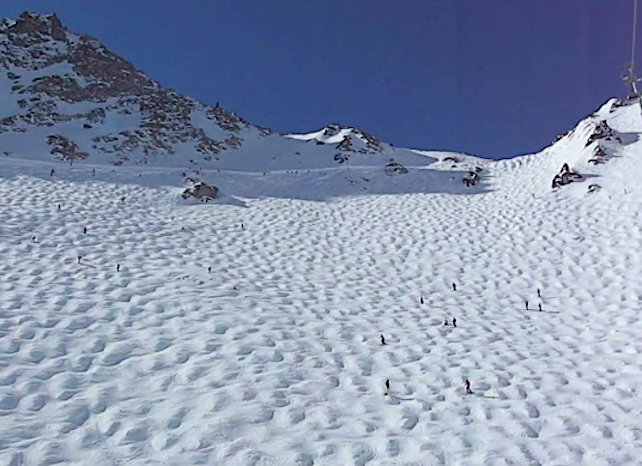
Wow factor: The view down from the traverse is the worse part. This is not a place to hesitate.
When to do it: December to April.
The degree of difficulty depends on the snow cover.
Appeal:
Steep and mean Tortin is the most notorious ski run in a resort famed for its difficult skiing.
Difficulty: You’ll need sharp ski edges and full concentration here.
Danger: Any fall is inadvisable (especially when icy) and liable to result in a 150m slide over giant bumps.
What’s involved: Access is via a traverse from where you take a left turn onto a wide but steep slope. In high season the moguls that develop here are fierce. The further you go, the worse they become.
History: The run is actually called Chaussoure, but everyone calls it Tortin which is the name of the lift you ski down to. 60 years ago Verbier was no more than a summer pasture used by cowherds from the valley town of Le Chable. The resort may lack history and magnificence, but the skiing is fabulous.
Can I bottle out? Not once you’ve started. The secret is to jump in at the beginning of the traverse. It is steeper, but you are more likely to stay upright. In powder, the run is gorgeous.
Verdict: If you’re good enough to do justice to Verbier’s skiing, then this is a ‘must’.
The Vallee Blanche, Chamonix
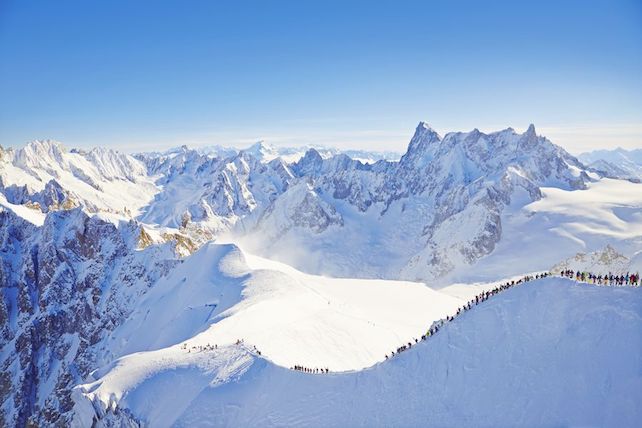
Wow factor: Visually mind-blowing.
When to do it: Throughout the season. Even by night in the light of the full moon.
Appeal: It proves to everyone – most of all yourself – that you’ve arrived as a skier. The scenery is stunning, too.
Difficulty: Low on the ‘normal’ route, after the steps down from the cable-car station.
Danger: Low, if you stick to the tracks of your guide.
What’s involved: Anyone with four weeks’ experience on skis beneath their feet can tackle the ‘main route’ provided they have a moderate level of fitness, a qualified ski guide, and a head for heights. Indeed part of the attraction of what is often billed, quite correctly, as the longest and most beautiful run in the Alps, is that you don’t have to be an expert to appreciate it. In fact, it’s too flat for most snowboarders. Don’t think you can ski it on your own though. On a busy day, the run is beaten almost to a piste, but beneath the snow, the glacier is heavily crevassed and it takes an expert to know which snow bridges are safe.
History: The glacier was first discovered by tourists in 1741, when two Englishmen, Richard Pococke and William Windham, took three days to reach it from Geneva. Pococke, for reasons best known to himself, was dressed in flowing Arab robes.
How to ski it: The adventure begins with the cable-car from the centre of Chamonix to the 3842m summit of the Aiguille du Midi. Guides supply crampons and rope their clients together as they make their way off the ridge, down rough-cut footholds. On the left, the drop is 2000m. Nervous novices are dismayed to be overtaken by die-hards who treat the ridge as a Sunday afternoon stroll as they slide down on their ski boots.
At the bottom you put on skis and the fun begins, finishing with a brisk climb off the Mer de Glace, to a lift which takes you to a train station. However, when snow permits, purists don their skis again after the climb and follow the long track that criss-crosses the lower section of the mountain.
Can I bottle out? No. Once you have donned skis, you must finish.
Verdict: A day-out you’ll never forget.
The Champagne Run, Vaujany and Alpe d’Huez
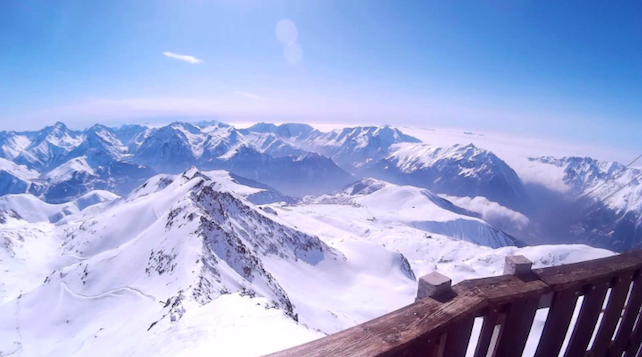
Wow factor: I mean ow. You’ll think your thighs are about to explode.
When to do it: December to late March or early April, but it is at its best in January.
Appeal: Iron man. “What? The whole way without stopping once?”
Difficulty: Moderate, depending on route taken, but not for the faint-hearted. Exhaustion is the principal enemy, especially in heavy snow conditions on the lower half.
Danger: Low, unless you happen to be the unfortunate Frenchman who came around a corner on the lower slopes a few years back and collided with a wild boar.
What’s involved: Skiing the world’s longest lift-served piste without stopping. The run – it takes a strong skier around 30 minutes to complete – starts on the 3330m summit of Pic Blanc above the quintessentially French village of Vaujany in the ski area of Alpe d’Huez. It ends at 1100m in the tiny hamlet of L’Enversin d’Oz – a distance of at least a dozen kilometres in which you descend 2230 vertical metres.
History: Alpe d’Huez is one of France’s oldest ski areas – where a certain M. Pomagalski invented his drag-lift in 1934. Skiers have been descending Pic Blanc to the lower villages since before World War II. The construction in the 1980s of a gondola cluster-lift back up to Vaujany from the bottom made the run feasible, but it only become possible to ski it in its entirety throughout the season when snow cannon were introduced on the lower slopes at the beginning of the Noughties.
How to ski it: By conserving your energy. It starts with a gruelling mogulfield followed by a push through a tunnel in the mountain. Daredevils follow the fall-line down a much steeper stretch of bumps that can be dangerous when icy. Any mistake here can result in a 20- to 30-metre slide. A path provides an alternative for less accomplished skiers.
By the time you reach La Fare, the second half of the predominantly black run, your thighs are on fire – but you still have 1000m vertical still to ski.
Can I bottle out? At any time after the tunnel section, but by then the steep bit is over.
Verdict: Challenging, but you need to be fit enough.
Delirium Dive, Banff
https://www.youtube.com/watch?v=ThlOqkCpwXE
Wow factor: There are dramatic cliffs and 45 degree chutes to tackle here, but even the walk down steep steps where you then negotiate a wind-blown and rocky ridge to gain access the route can scare people.
When to do it: December to April.
Appeal: Delirium Dive has a cult following among both locals and those visiting Banff-Lake Louise, and Sunshine Village in particular.
Difficulty: It is often said to be one of the world’s scariest ski runs.
Danger: The strict entry requirements are not for fun. This is a vast cirque of steeps, cliffs and chutes, with avalanche danger.
What’s involved: At the top of the Continental Divide Chair there’s a gate which can only be opened by using an avalanche transceiver, with the ski patrol watching to make sure those people starting the short hike to the summit of Lookout Mountain are equipped with a shovel, probe…and a friend.
History: The area has only been open since 1999; before that it was out of bounds as it was considered too dangerous.
How to ski it: The more adventurous can enter by jumping off the cliffs and cornices.
Can I bottle out? Not once you have started.
Verdict: This is where to find the best powder in the area. What keeps people coming back for more is the snow quality and depth.
Have your say
This is not an exhaustive list, but a small sample of what you can find in the Alps and the Rockies. Of course, what scares one person won’t bother another. Please add your favourites in the comments box below.


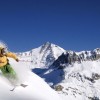

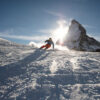






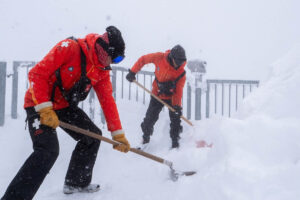

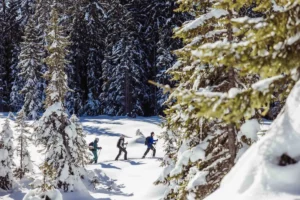
Thanks for the review. Only issue, I found it a bit too US and French-centric. While the Hahnenkamm is definitely respectable, wait until you see the Harakiri (78%) in Mayrhofen. You can find excellent 70%+ slopes to get quite a run for your money in Italy, too. Amongst these, the Staunies (72%) near Cortina and the twin blacks Erta (68%) and Piculin(70%) are the toughest in the Dolomites region. Piancugnolo and Spinale (both 70%) in Madonna di Campiglio and Berthod (73%) in La Thuile are not for the faint-hearted either.
Valluga’s north face in Sankt Anton largely deserves to be on that list, in my opinion.
Nice article – keeps me honest about my abilities and limits! Although it’s tamer by comparison, also try Imperial Bowl high above Breckenridge, Colorado, which is I believe the highest tow lift in North America, topping out at more than 13,000 feet. The drop off the edge onto the Bowl isn’t huge but needs a little nerve, and it opens into a wide partly-pisted run with a simply stunning panorama vista – it all adds up to an exhilarating experience which you will want to go back up and do again. It’s ok for average intermediates of reasonable fitness who can hang onto a t-bar (unless it’s been upgraded now) and with a head for heights. Maybe best done earlier in the day than later on when more skiers & boarders will be around; pick a sunny day December – March/April to get the views from the top before you drop in, and the better light that comes with clearer conditions. It’ll very likely be windy and possibly extremely cold on the ridge; go prepared, and enjoy!
Never got round to Delirium Dive – too scary! Too late now? Jumped into Corbet’s on my birthday (not gonna tell you which one!) and made a hash of it but at least I tried. Coped with all the rest of your list- just.
What about the Saudan Couloir at Blackcomb in British Columbia or KT22 at Squaw Valley. Kirkwood, south of Lake Tahoe, has got some nice steeps as well. Kirkwood’s runs aren’t all that long, but they are fun as hell.